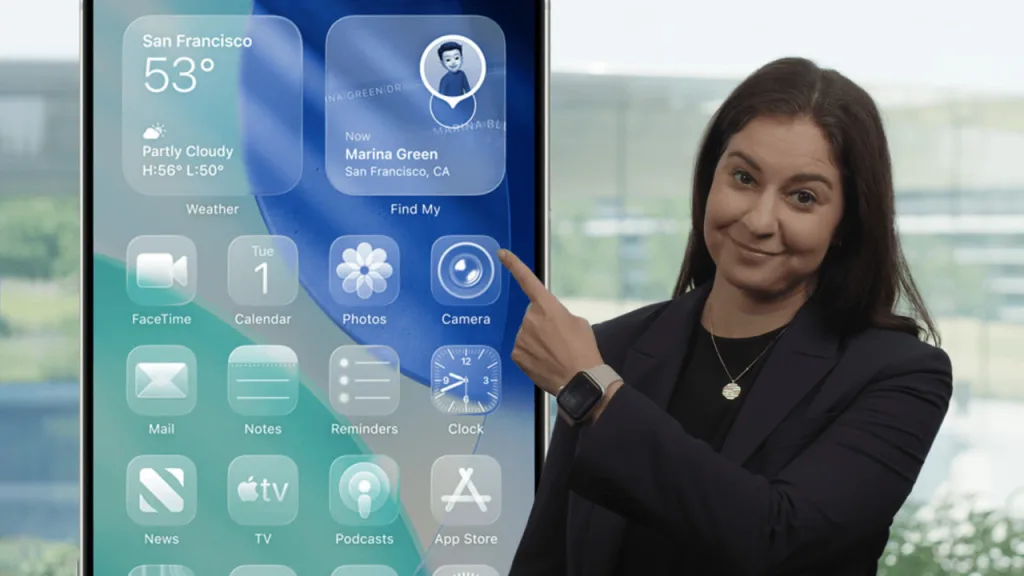Apple‘s iOS 26 is making headlines for all the right reasons—and some controversial ones too. The upcoming update introduces a groundbreaking FaceTime feature that automatically pauses video calls when it detects nudity or sensitive content. This isn’t just another privacy update; it’s Apple’s most ambitious attempt yet to create safer digital communication spaces.
Table of Contents
What Is the FaceTime Nudity Detection Feature?
Apple’s iOS 26 adds a new safety feature to FaceTime: if nudity is detected during a call, your video and audio will automatically pause, giving you a warning and the option to either end the call or continue. Think of it as an intelligent safety net that intervenes the moment things get inappropriate.
This feature expands Apple’s Sensitive Content Warning to FaceTime calls as part of its Communication Safety tools, bringing the same protective technology that’s been safeguarding Messages to real-time video conversations.

How the Technology Works
The detection happens entirely on-device using advanced machine learning algorithms. When the system identifies potentially sensitive content, it immediately freezes both video and audio streams, displaying a warning message that gives users control over their next steps.
| Feature Element | How It Works | User Control |
|---|---|---|
| Detection | On-device AI scans video feed | Automatic and instant |
| Response | Pauses video and audio streams | Immediate intervention |
| User Options | Warning message appears | Resume call or end call |
| Privacy | No data leaves device | Complete on-device processing |
The app shows a warning message and provides the option of immediately resuming audio and video, or ending the call. This puts the power back in users’ hands while providing that crucial moment to make an informed decision.
Privacy and Safety Balance
Apple has engineered this feature with privacy at its core. All processing happens on-device, meaning no images or data are sent to Apple’s servers. This approach maintains end-to-end encryption while providing real-time protection.
Communication Safety expands to intervene when nudity is detected in FaceTime video calls, and to blur out nudity in Shared Albums in Photos, showing Apple’s comprehensive approach to digital safety across all its communication platforms.

The Controversy: Adults vs. Children
Here’s where things get interesting. While it started as a tool for child accounts, the latest version appears to work for all users, including adults. This has sparked debate about whether Apple is overstepping boundaries or providing necessary protection.
Critics argue that consenting adults should have the freedom to make their own choices about video calls without technological intervention. Supporters counter that the feature prevents unwanted exposure and provides valuable protection against harassment or non-consensual sharing.
Child Safety at the Forefront
Apple’s primary motivation is clear: protecting children. At Apple, the goal is to create technology that empowers people and enriches their lives while helping them stay safe. For parents, this feature represents peace of mind in an increasingly connected world.
If Communication Safety determines that a photo or video contains nudity, it blurs the content, displays a warning that it might be sensitive, and offers ways to get help. This same protective approach now extends to live video calls.
Technical Innovation Behind the Feature
The technology represents a significant leap in on-device AI processing. Apple has managed to create a system that can analyze video content in real-time while maintaining the privacy standards that users expect from the company.
This isn’t just content filtering—it’s intelligent context awareness that can differentiate between accidental exposure and intentional content, though the exact parameters of this distinction remain proprietary.
Impact on User Experience
The feature aims to be unobtrusive for regular users while providing crucial protection when needed. The pause-and-choose approach means users aren’t locked out of their calls but are given agency over potentially uncomfortable situations.
For families, this could revolutionize how children interact with technology, providing parents with confidence that their kids are protected even in real-time communications.
Release Timeline and Availability
iOS 26 is expected to launch this fall, likely in mid-September 2025, bringing this feature to millions of devices worldwide. The rollout will likely be gradual, with different regions potentially receiving the feature at different times.
Apple hasn’t confirmed whether this feature will be optional or mandatory for all users, but given the company’s track record with privacy features, user control will likely be a key component.
Looking Ahead: The Future of Digital Safety
This FaceTime update represents more than just a new feature—it’s a glimpse into the future of digital communication safety. Apple is betting that users will value protection over absolute freedom, and early reactions suggest they might be right.
The technology could eventually extend to other video platforms, potentially setting new industry standards for real-time content moderation and user protection.
What This Means for You
Whether you’re a parent concerned about your child’s digital safety or an adult navigating modern communication, this feature will impact how you use FaceTime. The key is understanding that Apple is prioritizing safety while maintaining user choice and privacy.
For businesses using FaceTime for professional communications, this could add an extra layer of protection against inappropriate content during video conferences.
Stay updated with the latest iOS updates and privacy features by exploring more articles on TechnoSports. For official information about Apple’s Communication Safety tools, visit Apple’s Child Safety page and check out the latest iOS 26 updates on Apple’s official newsroom.
Frequently Asked Questions
Q: Can I disable the nudity detection feature in iOS 26 FaceTime?
A: Apple hasn’t officially confirmed whether this feature can be disabled for adult accounts. However, based on Apple’s approach to Communication Safety tools, there will likely be parental controls and potentially user settings to manage this feature, though complete disabling for child accounts is unlikely.
Q: Does the nudity detection feature work offline, and is my privacy protected?
A: Yes, the feature works entirely on-device using local AI processing. No images or video data are sent to Apple’s servers, maintaining complete privacy and end-to-end encryption. All detection and processing happen on your device, ensuring your personal content remains private.








